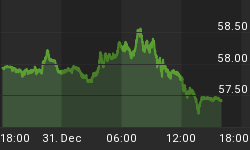Timing attempts to provide market equivalent returns over the long term, with a substantial reduction in variability of returns. The two components of the Timing program are EZ+Macro and Fear/Greed. This system trades rarely and splits its allocations between ETFs tracking the S&P 500, the intermediate-term U.S. Treasuries, and cash.
Commentary is presented first this week, followed by the system recap.
Commentary
My intuition is that the U.S. stock market has set up for an intermediate-to-long-term bottom, as discussed much earlier, but the Timing system is mechanical, and will be tracked based on the signals it generates.
The system is designed to provide market returns over the longer term, while significantly reducing equity curve volatility. It may be useful to see how the Timing system has compared to a "buy and hold" of the S&P 500 tracking SPY ETF since inception; below is a weekly chart comparing $100,000 invested in either strategy. If the chart is truncated in your browser, click it for a larger view.

The system went 50/50 stocks/cash on December 21, 2007, and then on January 18, 2008 went to 25/25/50 stocks/bonds/cash. The reduction in volatility is obvious.
System Summary
Information is as of the close on April 18, 2008.
EZ+Macro
My charts are relatively wide, and this site is best viewed at 1280×1024. If the chart is truncated in your browser, click on it to view it in full size.

EZ Trend is still down.

Macro Trend is bullish for Treasuries. This comes into play only if the EZ Trend is not up.
Fear/Greed

The Fear/Greed model signaled a buy for the U.S. stock market in early November, and a sell in December, as the $VIX relative to actual volatility fell to a historically low level. For most of the last four months, the current level of sentiment, as measured by the $VIX relative to actual volatility, has been at levels historically associated with complacency. In the scale of the chart, 80% of the readings since 1990 have been between the red and green lines.
Model Allocation
Based on beginning with a $100,000 portfolio at inception.
S&P 500 SPDRs (SPY) - 25.6%
iShares 7-10 Year Treasury Bond Fund (IEF) - 24.5%
Cash - 49.9%
Returns
Based on beginning with a $100,000 portfolio at inception.
Equity: $98,376.49
Gain, Last 4 weeks: 0.41%
Gain, Year to Date: -2.92%
Gain, Since Inception on 11/12/2007: -1.62%
These returns include the recent April distribution from IEF of $0.31 per share. This system has been 50% allocated to cash since December 21, 2007, and I have not been including gains from cash interest in the returns.
Changes To Model Allocation
There are no changes to the model allocation since this previous message. It is listed below:
S&P 500 SPDRs (SPY) - 25.0%
iShares 7-10 Year Treasury Bond Fund (IEF) - 25.0%
Cash - 50.0%
Tracking
There are no changes to track.
If you'd like to become of member of The Rempel Report, you can register here. At The Rempel Report, I track model portfolios for four different mechanical trading systems, as well as my personal portfolio, and disclose all results (good and bad) at regular intervals. Members receive email notification of new posts and can contribute to the site through comments. Registration is still free!
















